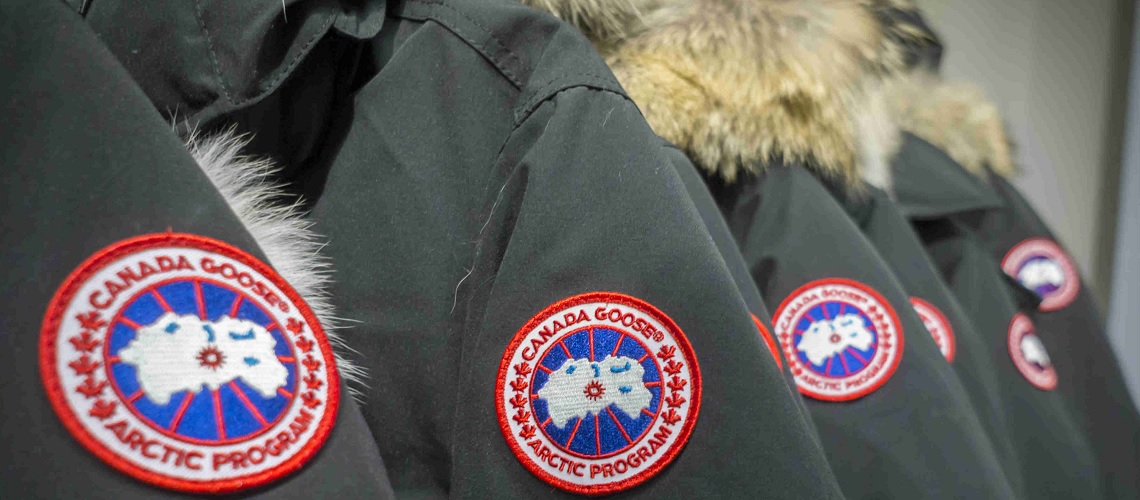Canada Goose Inc. Lifts Company’s Growth Targets For The Next Three Years

Canada Goose Holdings Inc. announced financial results for its fourth quarter and fiscal year ended March 31, 2018.
Canada Goose announced the next phase of its global retail expansion, opening three stores this fall in Short Hills, N.J., Montréal, Quebec and Vancouver, British Columbia. The stores are a celebration of the company’s commitment to craftsmanship and a curated showcase of the brand’s archives.
The brand will open its fourth U.S. store at The Mall at Short Hills, the preeminent fashion destination in the suburban metropolitan New York area, known for its luxury tenants. The Montréal store will be located on world-renowned Ste-Catherine Street in the heart of the city’s shopping and entertainment district for locals and tourists alike. In Vancouver, the Canada Goose store will open in the CF Pacific Centre, the city’s leading luxury shopping destination. The stores are set to open ahead of the 2018 holiday shopping season.
“The experience of shopping in a Canada Goose store is both a walk through our history and an opportunity to discover how we continue to innovate for the future,” said Dani Reiss, President & CEO, Canada Goose. “Every city where we have opened our doors has been an incredible experience with fans embracing us warmly. I am excited to bring our authentic brand experience, unfiltered, to our fans in these world class locations.”
Each store will weave together the brand’s authentic 60-year heritage with modern design in an Arctic-inspired environment. The new locations will reflect the local aesthetics of each city, while featuring familiar Canada Goose touches such as marble polar bear sculptures from Canadian Indigenous artist, Jason Carter, as a nod to the company’s 10-year relationship with Polar Bears International. The Short Hills and Montréal locations will be the first locations in North America to offer a ‘cold room’ – an immersive experience where fans can test the brand’s warmest parkas in temperatures as low as -25 Celsius (-13 Fahrenheit) to find the perfect jacket for the adventure they seek.
Canada Goose currently operates retail stores in seven cities including London, Toronto, New York, Boston, Chicago, Calgary and Tokyo, which is operated by its distribution partner. These stores complement the brand’s e-commerce business, which it has expanded to 12 countries since 2014. In May 2018, Canada Goose announced its growth strategy for Greater China, including opening stores in Beijing and Hong Kong, launching e-commerce via Alibaba Group’s Tmall platform, and establishing a regional head office in Shanghai.
The Annual Report, including Management's Discussion and Analysis and Audited Consolidated Financial Statements, will be filed on SEDAR at www.sedar.com and the EDGAR section of the U.S. Securities and Exchange Commission website at www.sec.gov and posted on the Company's web site at investor.canadagoose.com.
- Total revenue increased by 46.4% to $591.2 million
- Net income was $96.1 million, or $0.86 per diluted share
- Adjusted EBITDA margin expanded by 517 basis points to 25.2% from 20.1%
- Adjusted net income per diluted share increased by 95.3% to $0.84
“Our execution in fiscal 2018 was exceptional across all growth strategies and key metrics. These results reinforce my belief that we are still just scratching the surface of our global potential. As we continue to bring more Canada Goose to more of the world, we are resolutely focused on the long term and what we need to get there. Fiscal 2019 will be another exciting year, as we make significant strategic investments in infrastructure and people to support our foundation for enduring growth," stated Dani Reiss, President & Chief Executive Officer.
Fiscal 2018 Results (in Canadian dollars, compared to Fiscal 2017):
- Total revenue increased by 46.4% to $591.2 million from $403.8 million. On a constant currency basis total revenue increased by 47.7%.
- Wholesale revenue increased by 16.5% to $336.2 million from $288.5 million, driven by order book growth from existing accounts and higher re-order volumes late in the year.
- Direct-to-consumer ("DTC") revenue increased by 121.3% to $255.0 million from $115.2 million, representing 43.1% of total revenue compared to 28.5%. The increase was driven by the strong performance of existing retail stores and e-commerce sites including a full year of operations for Toronto and New York City retail stores, and incremental revenue from four new retail stores and eight national e-commerce sites opened during the fiscal year.
- Gross profit increased to $347.6 million from $212.1 million. As a percentage of total revenue, gross profit was 58.8% compared to 52.5%. The increase was primarily attributable to a greater proportion of DTC revenue, partially offset by higher inventory provisions.
- Wholesale gross profit was $157.8 million, a gross margin of 46.9%, compared to $125.1 million, a gross margin of 43.3%. The increase in gross margin was due to product mix, with a greater proportion of higher margin jackets from our Fall/Winter collection, and lower material costs.
- DTC gross profit was $189.8 million, a gross margin of 74.4%, compared to $87.0 million, a gross margin of 75.5%. The decrease in gross margin was primarily driven by product mix, with a greater proportion of lower margin styles and products, and to a lesser degree, foreign exchange fluctuations.
- Selling, general and administrative ("SG&A") expenses were $200.1 million, compared to $165.0 million, due to increases in retail store operating costs, corporate headcount, professional fees for public company compliance, marketing spend and administration costs. Fiscal 2017 included significant expenses related to our initial public offering which did not recur, as well as higher share-based compensation expense relative to fiscal 2018.
- Operating income was $138.1 million, an operating margin of 23.4%, compared to $40.5 million, an operating margin of 10.0%.
- Wholesale operating income was $120.6 million, an operating margin of 35.9%, compared to $94.4 million, an operating margin of 32.7%. The increase in operating margin was due to channel gross margin expansion.
- DTC operating income was $134.7 million, an operating margin of 52.8%, compared to $59.5 million, an operating margin of 51.7%. The increase in operating margin was driven by a decrease in channel SG&A as a percentage of sales, which more than offset the decline in gross margin.
- Net income was $96.1 million, or $0.86 per diluted share, compared to net income of $21.6 million, or $0.21 per diluted share.
- Adjusted EBITDA increased by 84.1% to $149.2 million from $81.0 million. Adjusted EBITDA margin expanded by 517 basis points to 25.2% from 20.1%.
- Adjusted net income per diluted share increased by 95.3% to $0.84 on 111.5 million shares from $0.43 on 102.0 million shares.
Fiscal 2019 and Long-Term Outlook
For fiscal 2019, the Company currently expects the following:
- Annual revenue growth of at least 20%
- Adjusted EBITDA margin expansion of at least 50 basis points
- Annual growth in adjusted net income per diluted share of at least 25%
Key assumptions underlying the fiscal 2019 outlook above are as follows:
- Wholesale revenue growth in the mid-single-digits on a percentage basis
- Five new retail stores in operation by the onset of the peak winter selling season
- Six retail stores in operation in off-peak periods in the first half of the year, compared to two in fiscal 2018
- SG&A growth investments in infrastructure and people including IT and the establishment of a country office in China to lead market development efforts
- SG&A fees to operating partners on DTC sales in China
- Capital expenditures of $65 million including investments in new retail stores, IT and manufacturing capacity
- Weighted average diluted shares outstanding of 112.1 million
- Effective annual tax rate approximately in-line with fiscal 2018
Over the next three fiscal years, the Company currently expects the following:
- Average annual revenue growth of at least 20%
- Annual adjusted EBITDA margin of at least 26% in fiscal 2021
- Average annual growth in adjusted net income per diluted share of at least 25%














